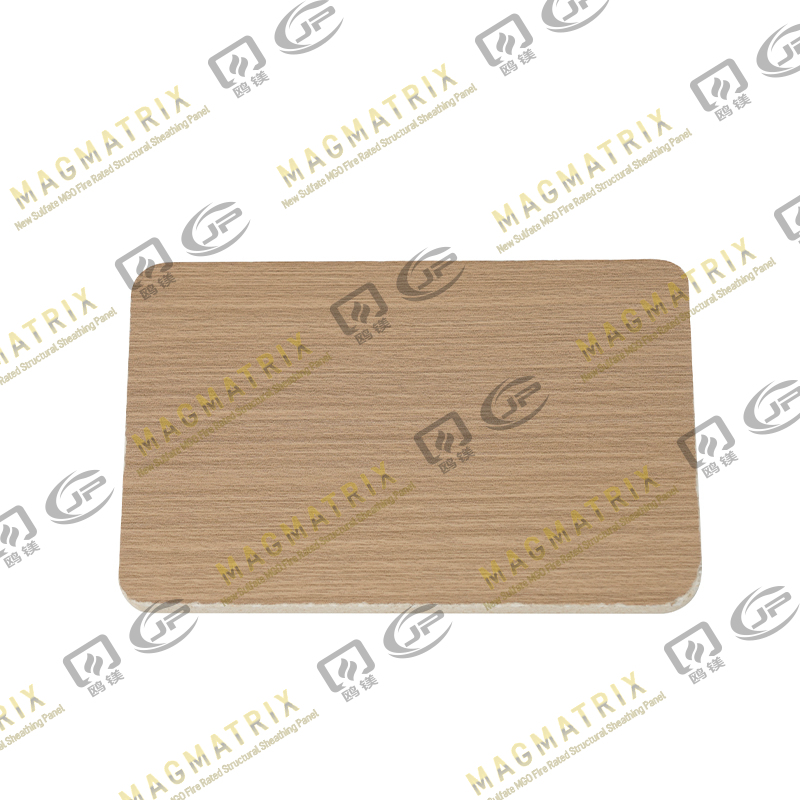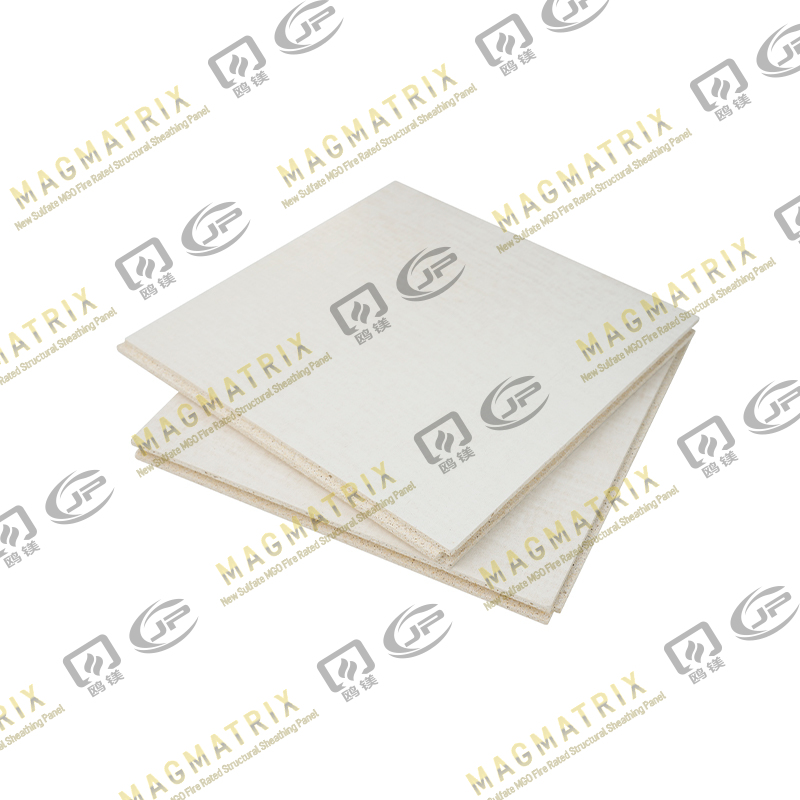
Magnesium oxide boards are transforming modular construction. These boards cut project completion time by half when compared to regular building methods. Our research shows these innovative materials work better and need 25%-50% less energy than standard Portland cement products. This change brings down construction's impact on the environment by a lot.
The best thing about magnesium oxide boards? They just don't quit. These tough boards can take heat up to 1200°F without melting. They stay stable in wet conditions and stop mold from growing - a common issue with gypsum products. On top of that, they're great at keeping heat in or out, which helps cut down on heating and cooling costs. Building owners save money in the long run.
The market knows how good these boards are. Numbers show it will grow from $ 1.5 billion in 2023 to $ 3.0 billion by 2032, rising at 7.2% each year. These light, recyclable materials are becoming the top choice to build eco-friendly modular structures, and we'll get into why that matters.
What Are Magnesium Oxide (MgO) Boards?
MgO boards are becoming a popular choice in construction. These mineral-based building materials work great as replacements for plywood, OSB, and gypsum wallboards. You can use them both inside and outside buildings.
Composition: Magnesium oxide, perlite, and fiberglass mesh
MgO boards get their amazing properties from several key ingredients. These boards are mostly made of magnesium oxide, which makes up 56-58% of the total mix. The natural mineral creates very strong bonds between magnesium and oxygen atoms. These bonds form crystals that give the boards their strength.
You'll find two main types of MgO boards in today's market:
1. Traditional MgO Boards - They use magnesium chloride (MgCl₂) as a binding agent, which makes up about 27- 29% of the board.
2. Newer Sulfate-Based MgO Boards - They use magnesium sulfate (MgSO₄) instead of chloride. These boards handle moisture better.
3. MagMatrix the BMSC 517 New Sulfate MgO Boards - That is the third generation of the most innovative 517 hydration inorganic sulfate MgO board, and its microstructures have been listed in the global inorganic society for tracking and research.
The boards also contain:
● Perlite (3-4%) - This volcanic glass expands with heat to create a light, porous material with great thermal properties
● Wood Fiber (5-6%) - This adds flexibility and strength
● Phosphate (0.1-0.3%) - This boosts overall performance
● Fiberglass Mesh (4-6%) - This reinforces the structure and makes the boards much stronger and more resistant to impacts
Manufacturers mix these ingredients into a cement-like slurry and add layers of glass fiber mesh. They shape this mixture into panels and let them cure. The result is an incredibly tough and versatile building material.
MgO boards are light and easy to work with. They have a low density (0 .85–1.2 g/cm³), which makes transportation and installation easier.
How MgO boards differ from gypsum and cement boards
MgO boards stand out from other building materials in several ways. Here's what I found when looking at how they compare to gypsum boards (drywall):
Fire Resistance MgO boards protect better against fire. They have a Class A1 fire rating and can handle temperatures up to 1200°F without breaking down. Gypsum boards offer some protection as water turns to vapor in their core during heating, but they end up burning in flames.
Moisture and Water Resistance MgO boards really shine when it comes to handling moisture. While gypsum boards fall apart when wet, MgO boards stay stable. They don't warp, swell, or rot. This makes them perfect for bathrooms and basements where humidity runs high.
Mold and Mildew Resistance These boards naturally stop mold and mildew from growing. This gives them a big advantage over regular gypsum boards, which can easily grow fungi in damp spots.
Structural Strength The boards can take quite a beating. They resist impact at 4.5 kilojoules or more and have a bending strength of 18-27 MPa. A single screw in a 12mm MgO board holds 200 pounds in shear. This makes them much stronger than both gypsum and cement boards.
Environmental Impact MgO boards are better for the environment than gypsum and cement boards. They need less energy to make than gypsum boards, and they actually absorb CO₂ while curing.
Installation Considerations While MgO boards cost more than gypsum boards, they're easier to install. You can score and snap them like drywall, or saw, drill, and attach them to wood or steel framing. They're so hard you don't need corner and J beads, and joints work fine without stud backing.
The higher price tag of MgO boards pays off through better durability, less maintenance, and longer life. They work especially well in modular construction where you need reliable performance. Their mix of strength, moisture resistance, and fire protection makes them worth the investment.
How MgO Boards Are Manufactured
MgO board manufacturing combines traditional methods with modern techniques in a multi-stage process. These boards need special techniques to achieve properties that set them apart from regular building materials.
Naturally molding and curing process
The production starts with raw material preparation. MgO, the main ingredient, comes from magnesium carbonate processed under natural pressure to slurry sheets backed onto the mold support sheet. These stones become a fine powder ready to mix with other components.
The manufacturing process has six main stages:
1. Raw Material Mixing: MgO powder combines with magnesium sulfate, perlite, glass fibers, wooden chips, and water solution. The mix ratio changes based on the board's intended use.
2. Board Forming: The mixed paste goes onto molds that give the boards their needed dimensions. This step will give a consistent thickness and size in every batch.
3. Natural Slurry: Very natural slurry onto the mold sheets with the rough sizes specifications of the final panel sizes.
4. Curing: This is where MgO reacts with magnesium sulfate solutions to form a strong hydration reaction that air- harden the material. The reaction needs specific temperature and humidity conditions, and it will need 2 2-stage of curing process.
5. Demolding: The solid boards come out of their molds once they're ready.
6. Drying and Cutting: The boards are naturally temperature to remove extra moisture. Then they're cut to exact sizes and sanded smooth.
The hydration reaction between components creates an incredibly strong material. The curing process lets MgO react with other materials to develop its strength, fire resistance, and ability to resist moisture.
Energy-efficient production with low emissions
MgO board manufacturing has impressive environmental benefits. The production needs temperatures nowhere near as high as traditional building materials, saving about 60% energy during manufacturing.
MgO boards produce about 340kg of CO₂ per metric ton. That's less than half of concrete's 750kg per metric ton. The boards need only half the energy of calcium cement and just a third of what gypsum needs.
These boards help reduce carbon too. They absorb CO₂ from the air while curing. Some experts say MgO might even have a negative carbon footprint when mixed with cement.
MgO boards are environmentally responsible to make because:
● They use 25-50% less energy than Portland cement
● Production follows a natural, low-energy curing process
● They create 60-80% fewer emissions than other building materials
● You can recycle the boards 100% without causing pollution
The raw materials come from seawater and brine pools, which means less mining. This matches the growing need for environmentally responsible construction materials in the MgO boards market.
The simple production steps, compared to cement and gypsum, help save energy. By skipping energy-hungry processes like grinding, blending, and extreme temperature firing, manufacturers can work efficiently while making a better product.
Fire Resistance Capabilities in Modular Construction
Fire safety is a basic need in building design. This need becomes even more critical for modular construction where prefab components must meet strict safety standards. MgO boards stand out in this area. They provide better fire protection than most regular building materials.
Class A1 fire rating and 1200°F resistance
MgO boards have earned the highest fire resistance rating possible—Class A1 non-combustible—based on international standards. This top rating proves these panels won't catch fire or spread flames even in extreme heat.
MgO boards' heat resistance makes them unique in construction. They stay strong at temperatures up to 1200°F (about 650°C) . Some high-end MgO panels are even tougher. Tests show they can handle heat above 1,472°F (800°C) . These boards keep their shape in extreme heat for long periods. Some products don't even change color after 30+ minutes at temperatures above 750°C (1,382°F) .
MgO boards excel at containing fires in modular construction projects:
● They provide fire protection for up to 4 hours based on thickness and formula[171]
● They keep zero flame spread ratings in long-term tests
● They char instead of burn during fires. This helps absorb heat and slows fire spread
This amazing fire performance makes MgO boards better than many standard materials. Regular gypsum boards last less than an hour in fires, while MgO boards stay intact up to four times longer. Cement boards beat gypsum in fire protection but still can't match MgO boards' complete protection.
|
Material
|
Fire Rating
|
Temperature Resistance
|
Flame Spread
|
|
MgO Board
|
A1 Non-Combustible (up to 4 hours)
|
Up to 1200°F/1472°F
|
Zero
|
|
Gypsum Board
|
Fire-Resistant (Limited, <1 hour)
|
Limited
|
Moderate
|
|
Cement Board
|
Highly Fire-Resistant
|
Good
|
Low
|
|
Fiber Cement Board
|
Fire-Resistant
|
Moderate
|
Moderate
|
No toxic smoke emission during combustion
MgO boards offer another crucial safety benefit beyond containing fires. They release almost no toxic emissions when exposed to fire. This feature saves lives during evacuations since smoke often kills more people than the fire itself.
During fires, MgO boards show these safety features:
● They don't release toxic fumes or gasses like synthetic materials do[171]
● They release water vapor (about 30 lbs. in a typical fire). This helps cool and contain flames naturally
● They stay non-toxic even at very high temperatures
This property matters a lot in modular construction. Modular units often have tighter joints and more enclosed spaces than regular buildings. This makes preventing toxic gas buildup vital for safety. Modular buildings also serve vulnerable groups in places like emergency housing, hospitals, or schools where quick evacuation might be hard.
Regular materials like wood panels or composites release carbon compounds and toxic chemicals that make air dangerous fast. MgO boards create safer evacuation conditions by:
1. Keeping smoke levels very low based on standard tests
2. Releasing cooling water vapor instead of harmful substances
3. Fighting combustion naturally due to their inorganic makeup
These features play a vital role in modular construction where fire safety affects certification needs across different regions. MgO boards' market keeps growing. Their superior fire resistance has become a major selling point for makers and buyers, especially where safety matters most.
Moisture and Mold Resistance in Humid Environments
Moisture management becomes a critical concern for building materials in humid environments. Magnesium oxide boards solve this challenge with their exceptional water-resistant properties that substantially extend their lifespan in damp conditions. These boards are a great choice in modular construction where protection against moisture damage is essential.
MgO boards stay remarkably stable when exposed to moisture. These boards maintain their structural integrity even after water exposure, unlike traditional building materials. Their non-absorbent surface stops moisture absorption, which eliminates common water damage problems.
The wetting-drying test results show MgO boards perform better than conventional alternatives:
● MgO panels show negligible change in flexural strength after 25 wetting-drying cycles
● OSB loses about 40% of its strength under similar conditions
● Plywood's strength drops by 9%
● Gypsum panels weaken by 36-52%
MgO boards' exceptional moisture resistance comes from their unique composition. Traditional materials like drywall and plywood soak up water easily. However, MgO boards contain inorganic compounds that naturally repel moisture. This feature keeps them dimensionally stable without warping, swelling, or delaminating in wet conditions.
MgO boards are highly water-resistant but not completely waterproof. They can handle short-term water exposure without deterioration. This gives builders and occupants time to fix water intrusion issues before structural damage occurs. Their water absorption rate stays below 10% according to ASTM C272 testing standards.
The binder used in manufacturing MgO boards affects their moisture resistance. Modern sulfate-based MgO boards resist water better than traditional chloride-based versions.
Magnesium sulfate doesn't attract or hold moisture like magnesium chloride does.
Mold and mildew resistance in wet areas
MgO boards' natural resistance to mold and mildew growth makes them valuable. This feature becomes especially useful in humid environments where fungal growth often damages conventional building materials.
MgO boards resist mold growth for two main reasons:
1. Their inorganic composition doesn't feed mold spores
2. Their high alkalinity creates conditions where fungi can't grow
These qualities make MgO boards perfect for moisture-prone areas:
● Bathrooms and shower enclosures
● Kitchen backsplashes and under-sink areas
● Laundry rooms
● Basements and below-grade applications
● Pool areas and saunas
Traditional building materials often cause indoor air quality problems through mold growth in damp conditions. MgO boards help create healthier indoor spaces by stopping fungi that trigger breathing problems and allergies.
Lab tests confirm that MgO boards fight various types of fungal growth through multiple wetting cycles. This feature proves valuable in modular construction where units face different climate conditions during transport and installation.
The financial benefits of mold resistance go beyond initial costs. MgO boards save money long-term by preventing mold damage and cleanup expenses, despite costing more upfront than gypsum options.
Installing MgO boards in damp areas needs careful attention. Using edge sealers or primers made for MgO boards can boost their moisture resistance. Storing boards in dry places before installation helps maintain their performance.
The construction industry now focuses more on indoor air quality. As a result, builders looking for healthier building solutions are drawn to magnesium oxide boards' mold and moisture resistant properties.
Structural Strength and Long-Term Durability
Magnesium oxide boards stand out in construction thanks to their exceptional strength and durability. These panels offer unmatched fire and moisture resistance along with mechanical strength that leaves traditional building materials far behind.
Impact resistance in high-traffic zones
Tests show MgO boards have remarkable impact resistance values over 4.5 kilojoules. The secret lies in their fiberglass mesh core, created during manufacturing. This mesh works like a woven structure that spreads impact forces across the board instead of concentrating them at one point.
This tough nature makes MgO boards perfect for areas that take constant physical abuse. These panels stay strong even after sudden hits or daily wear in places like:
● Schools where walls face constant student activity
● Medical facilities needing tough, easy-to-clean surfaces
● Business spaces with moving equipment
● Busy hallways in apartment buildings
MgO boards prove their worth in demanding situations. Regular gypsum boards only offer 1 kilojoule of impact protection, while MgO boards provide four times more. An impact that cracks drywall might not even leave a mark on an MgO board.
These boards also excel at bending strength. They can resist flexural forces of 18-27 megapascals, which lets them handle pressure without breaking. This flexibility helps prevent cracks from building movement that would damage other materials.
Comparison with gypsum and fiber cement boards
MgO boards outperform traditional options across several structural measures:
|
Property
|
MgO Boards
|
Gypsum Boards
|
Fiber Cement Boards
|
|
Impact Strength
|
4.5+ kilojoules
|
1 kilojoule
|
Good but more brittle
|
|
Bending Strength
|
18-27 MPa
|
5.6 MPa or less
|
Variable
|
|
Weight-to-Strength Ratio
|
Excellent
|
Poor
|
Heavy with good strength
|
|
Fastener Holding
|
Single screw holds 200 lbs
|
Limited
|
Good
|
|
 Long-term Durability Long-term Durability
|
 30-100 years 30-100 years
|
 7-12 years typical 7-12 years typical
|
 50+ years 50+ years
|
MgO boards offer clear benefits for structural use. Fiber cement boards are tough but heavier and more likely to crack than MgO options. Gypsum boards are much softer and easily damaged by impacts or heavy loads.
Load-bearing applications showcase MgO boards' real strength. They can support heavy fixtures without extra backing. You can hang shelves, cabinets, or grab bars directly on
MgO panels without reinforcement—a huge plus for space-efficient modular construction.
The durability brings long-term savings. MgO boards cost more upfront than gypsum, but their longer life and lower maintenance needs provide better value. These boards keep their structural strength for decades without the usual wear seen in standard materials.
As construction moves toward green, lasting solutions, MgO boards represent the future of building materials. Their mix of impact resistance, structural strength, and durability makes them an excellent choice for modern construction projects that demand peak performance.
Thermal and Acoustic Insulation Benefits
MgO boards excel not just in strength but also boost thermal and acoustic comfort in modular construction. These boards' insulation properties make them perfect for modern building design. Builders now prefer them for creating energy-efficient and quiet environments.
Maintaining indoor temperature in modular units
MgO boards shine when it comes to thermal efficiency in modular construction. These panels have great insulation properties with U-values as low as 0.186 w/m/k. They protect buildings from both hot and cold temperatures. The boards help keep indoor temperatures stable without heavy reliance on heating and cooling systems.
MgO boards' thermal insulation works two ways:
● They keep heat inside during cold weather
● They block outside heat when it's warm
Buildings with MgO panels use less energy than those built with standard materials. Occupants save money on utility bills - a huge plus in today's energy-conscious market.
Some manufacturers add special core materials to boost thermal performance. MgO-based Structural Insulated Panels (SIPs) use EPS (expanded polystyrene) cores for better insulation. This creates a solid thermal barrier that works better than broken insulation systems.
MgO boards' thermal properties make them ideal for modular construction. Prefab units need stable temperatures during shipping and after setup. These boards regulate heat transfer well, whatever the weather outside.
Noise reduction in multi-unit housing
MgO boards excel at blocking sound too. Their dense structure stops noise transmission, with some products cutting noise by over 40 decibels. This makes them perfect for apartment buildings where quiet living spaces matter most.
MgO boards tackle several noise issues:
1. Airborne noise reduction – Less sound travels through walls and floors
2. Impact sound absorption – Fewer footsteps and vibrations get through
3. Environmental noise blocking – Better protection from outside noise like traffic
Unlike regular building materials that let sound pass through, MgO's structure blocks sound waves. This creates quieter indoor spaces - especially helpful in noisy urban areas.
These boards work great beyond homes. Recording studios, theaters, hospitals, and schools use MgO acoustic panels. The boards both block and absorb sound, solving multiple acoustic problems at once.Real-life examples prove these benefits. An urban apartment complex using MgO panels in its prefab units reported much less noise, even during rush hour. An office building also saw better workspace acoustics after installing these boards. This shows how well they work in different types of buildings.
Environmental Impact and Sustainability
The eco-friendly nature of magnesium oxide boards marks a breakthrough in green construction materials. The construction industry now focuses on environmental responsibility, and MgO boards show remarkable advantages throughout their lifecycle.
CO₂ absorption during curing
MgO boards stand out from traditional construction materials because they capture carbon dioxide during production. These boards absorb CO₂ from the atmosphere and form stable magnesium carbonate as they cure. This carbon capture continues throughout their service life and supports environmental goals.
MgO boards' carbon footprint is just 340 kg of CO₂ per metric ton, which is nowhere near calcium oxide's (CaO) 740 kg per metric ton. The boards achieve this lower emission level through their energy-efficient manufacturing process. The production needs 25-50% less energy than Portland cement alternatives.
A lifecycle analysis shows that MgO boards need fewer natural resources than conventional materials. This results in 50% lower total carbon emissions.
Recyclability and LEED certification potential
MgO boards can be recycled completely after their useful life ends. These boards serve multiple purposes after their primary use:
● They become new building materials when crushed and reprocessed
● They work as ground cover or road base material
● They serve as additives in other construction products
MgO boards help earn many LEED credits. Their recyclable nature supports Materials and Resources credits for construction waste management (MR Credits 2.1 and 2.2) . These boards contain no toxic chemicals like formaldehyde, asbestos, and VOCs, which helps achieve Indoor Environmental Quality prerequisites and credits (EQ Prerequisite 1 and EQ Credits 4.1-4.4).
The boards' environmental benefits go beyond manufacturing. They use magnesium—Earth's eighth most abundant element—as their main raw material. This reduces the need for heavy mining operations common with traditional construction materials.
The magnesium oxide boards market grows as more people recognize these environmental advantages. This makes them an ideal choice for environmentally conscious construction projects.
Magnesium Oxide Boards Market and Industry Adoption
Magnesium oxide boards have revolutionized construction materials, and their market growth reflects this success. These boards have become game-changers in building practices. The financial projections clearly show their growing importance across construction sectors.
Growth forecast: $1.5B in 2023 to $3.0B by 2032
The global magnesium oxide board market continues to expand impressively. Market research values the industry at $ 1.64 billion in 2023, with projections reaching $ 3.0 billion by 2032. The compound annual growth rate (CAGR) ranges between 4.98% and 5.35% during this period.
Several sectors stimulate this market's expansion. Residential building commands a significant 37.4% market share, as homeowners seek fire-resistant and eco-friendly construction materials. Thin MgO boards lead the market with a 42.7% share, as builders prioritize lightweight applications. The construction industry's expected 6.2% growth in 2024 should boost the demand for these versatile panels.
Adoption in Asia-Pacific and North America
Asia-Pacific leads the magnesium oxide board market with a 35% share. China, India, and Japan's rapid urbanization has pushed the region's market value to $ 866.1 million in 2024. The Southeast U.S. has emerged as a strong contender and should see a 2.3% CAGR through 2032.
North America's growth remains strong. The U.S. market should reach $ 401.92 million by 2032. This growth stems from strict building safety regulations and eco-friendly building practices. Home remodeling grew by 8% in 2023, further boosting adoption.
The U.S. Green Building Council has added magnesium oxide boards to their preferred materials list. This has led to a 35% increase in LEED-certified projects. Prefab construction expects to use 70% more boards in 2024, highlighting their value in modular construction.
Conclusion
MgO boards prove to be better than traditional building materials in many ways. These boards can withstand temperatures up to 1200°F without releasing toxic emissions, which makes them much safer for people and property. On top of that, they stay strong in humid conditions and stop mold from growing - a key feature that keeps indoor air healthy throughout a building's life. The boards' impact resistance of 4.5+ kilojoules beats gypsum boards by a lot, as gypsum only handles 1 kilojoule. This makes them last longer in high-traffic areas.
MgO boards are eco-friendly too. They absorb CO₂ during production and can be recycled when no longer needed. Their great thermal and acoustic properties create long-term value that outweighs their higher original costs. The market shows strong growth potential, expected to rise from $1 .5 billion in 2023 to $3 .0 billion by 2032. This growth is especially strong in Asia-Pacific and North American regions.
Facts show that MgO boards are the smart choice for modern modular construction projects. Traditional materials might cost less upfront but can't match MgO boards' complete performance, sustainability, and lifetime value. Building codes now focus more on durability, safety, and environmental impact. These innovative boards will keep gaining market share and set new standards for construction excellence. MgO boards' versatility and performance show they're not just another option - they represent the next step in building material technology that fits perfectly with future eco-friendly construction practices.
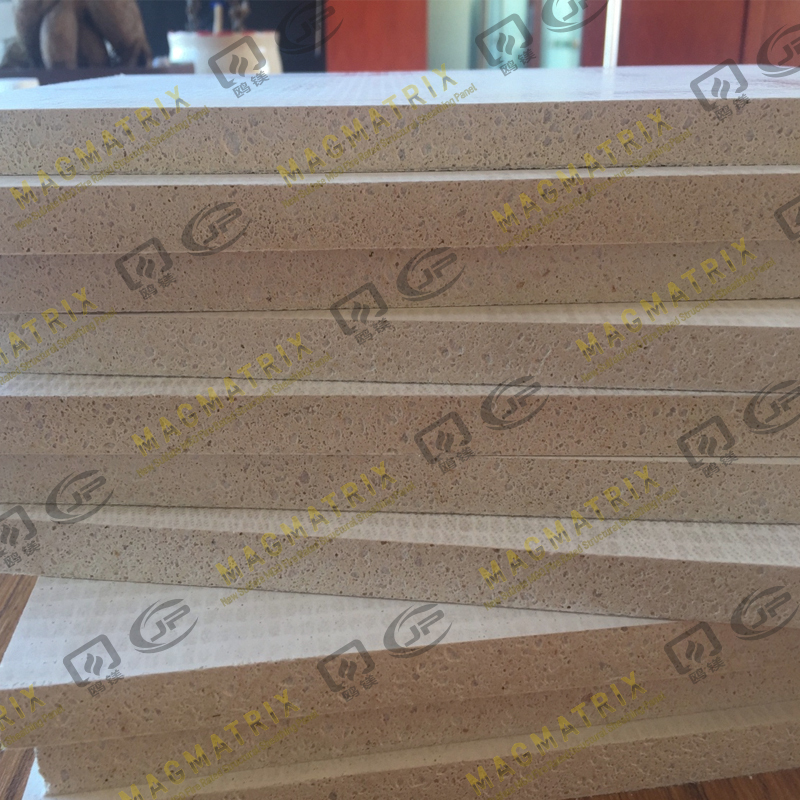 BMSC 517 New Sulfate MgO Board
BMSC 517 New Sulfate MgO Board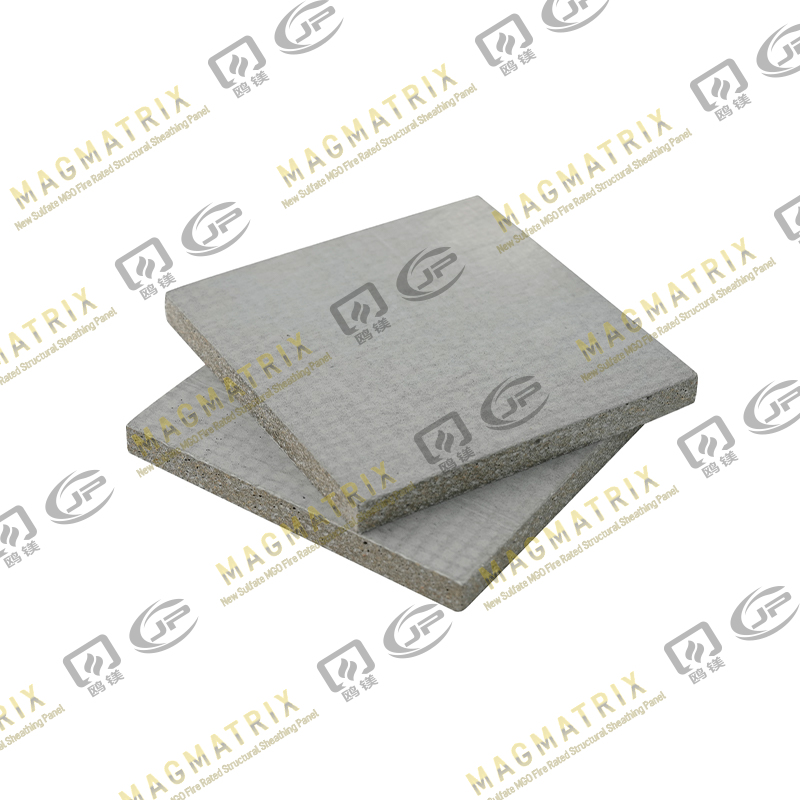 Multi-Support MgO Wall Sheathing Board
Multi-Support MgO Wall Sheathing Board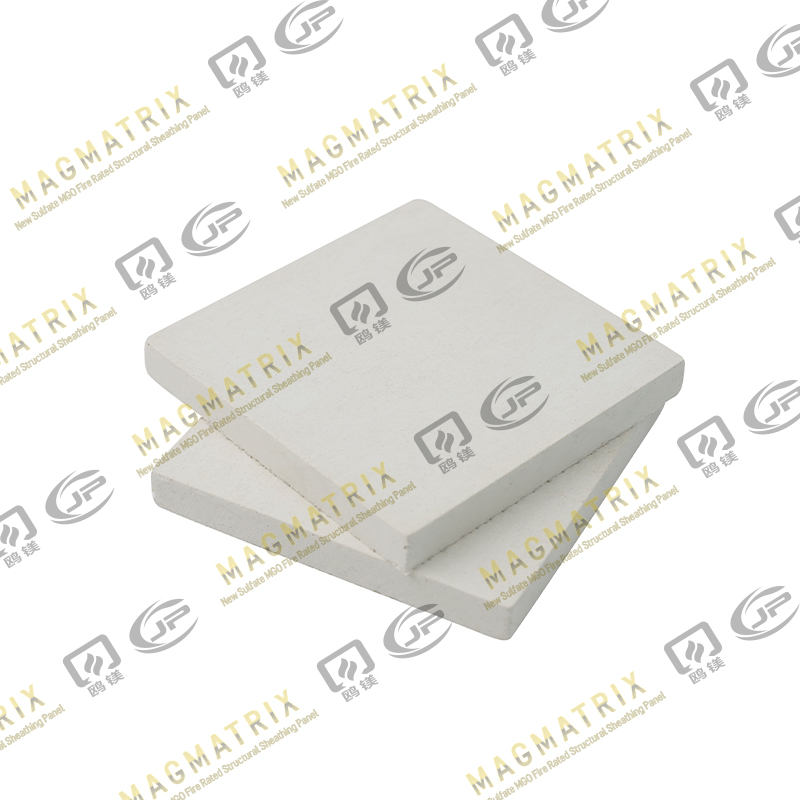 Perseverance MgO Wall Sheathing Board
Perseverance MgO Wall Sheathing Board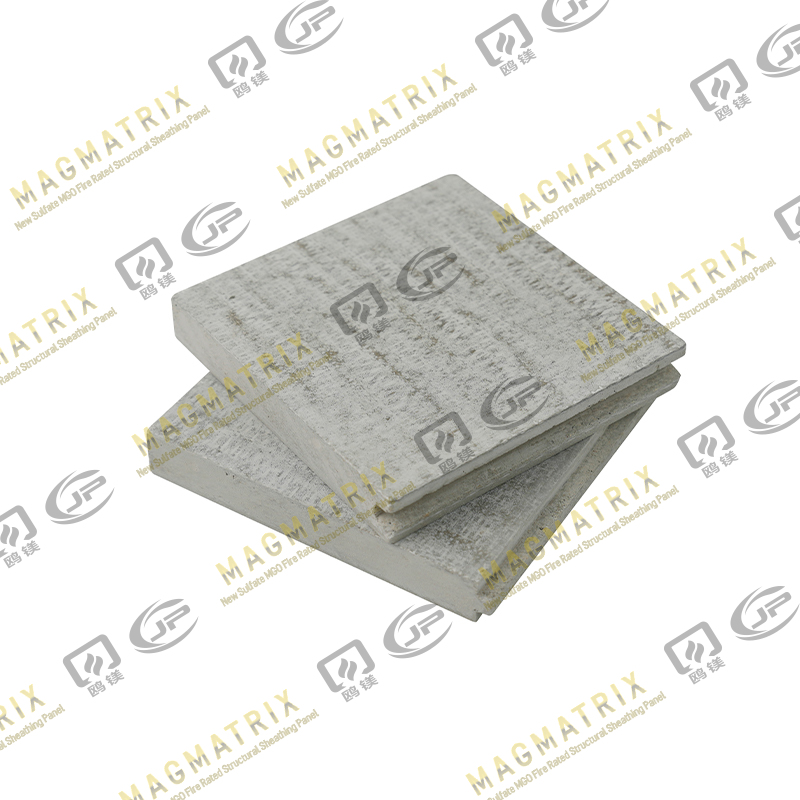 Multi-Support MgO Subfloor Sheathing Board
Multi-Support MgO Subfloor Sheathing Board Perseverance MgO Subfloor Sheathing Board
Perseverance MgO Subfloor Sheathing Board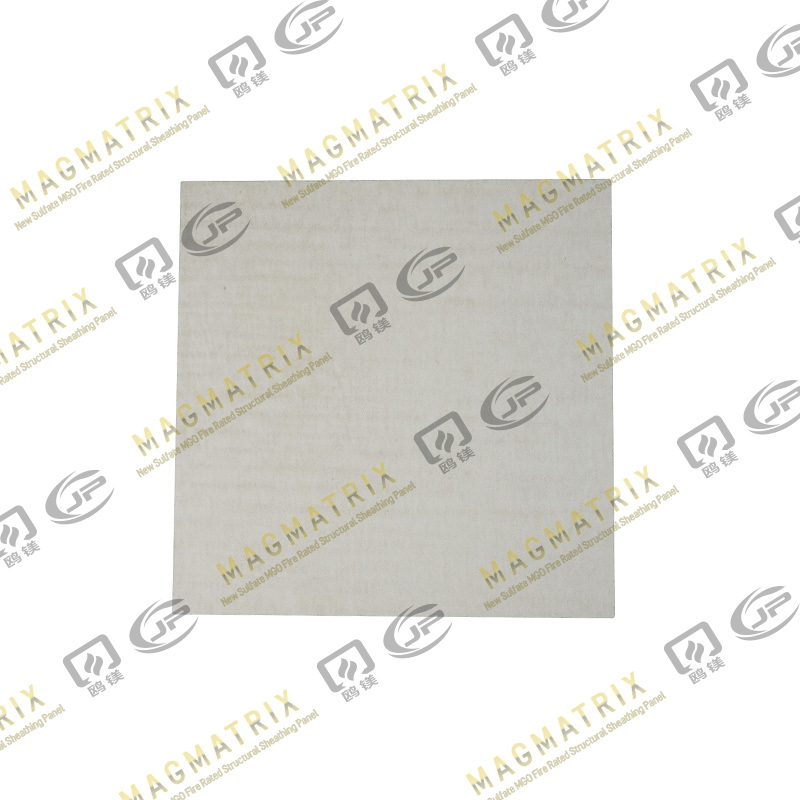 MagMatrix MgO Underlayment Panel/board
MagMatrix MgO Underlayment Panel/board


 English
English русский
русский Español
Español
